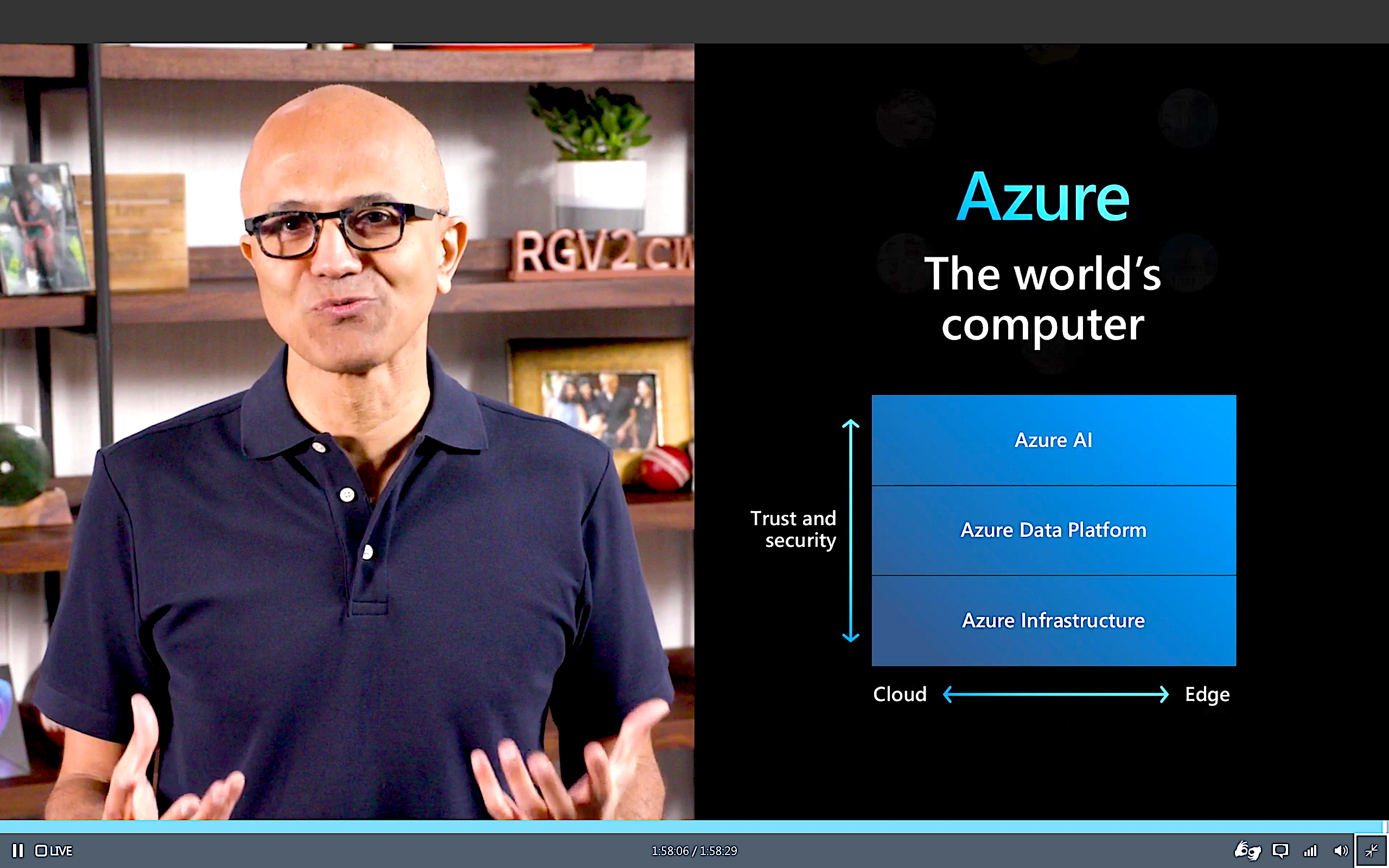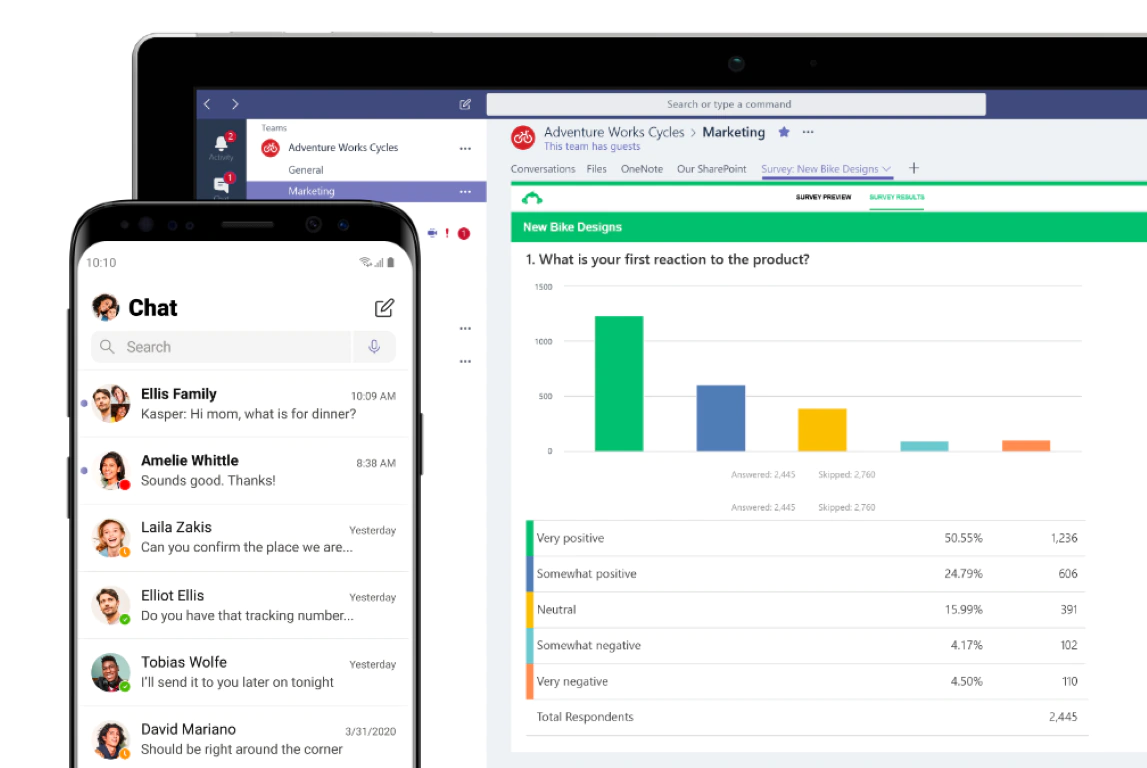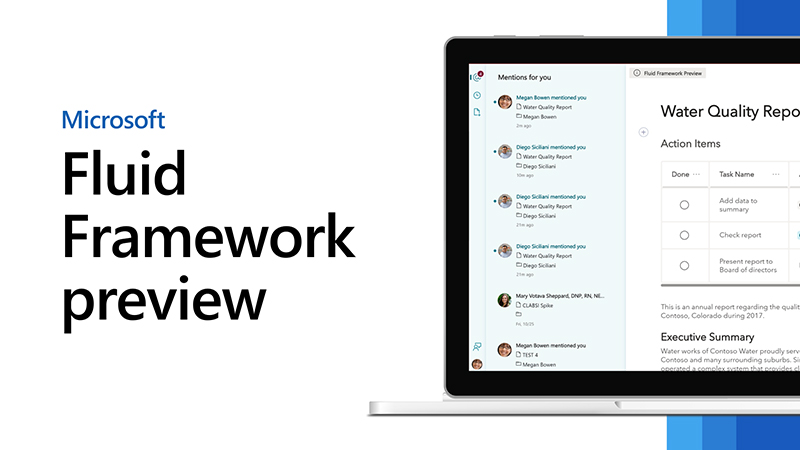 APPS
APPS
 APPS
APPS
 APPS
APPS
Microsoft Corp. kicked off its annual developer conference Build 2020 today with new services to unify Windows application development, additional Teams services and even a supercomputer for artificial intelligence available through its Azure cloud service.
This year’s event is quite a bit different from previous editions, as safety concerns around the coronavirus pandemic prompted Microsoft to transform its biggest software conference into a “48-hour digital experience” that takes place entirely online, including a keynote from Chief Executive Satya Nadella (pictured). But as usual, the software and cloud giant debuted a wide range of new products and services.
A big focus of Microsoft this year is on unifying application development across the vast Windows 10 ecosystem that now numbers more than 1 billion devices. To achieve this, Microsoft is announcing “Project Reunion,” which is the company’s vision for “unifying and evolving the Windows developer platform” to make it easier to build apps that work across all Windows versions and devices.
“For the past couple of years, we have been breaking down the barrier between Win32 (also called the Windows API) and Universal Windows Platform (UWP) APIs,” Kevin Gallo, corporate vice president of the Microsoft Developer Platform, wrote in a blog post. “Project Reunion expands this effort to make it easier to build a great Windows app.”
Project Reunion is an effort by Microsoft to unify the existing Win32 and WWP APIs so as to make them available, decoupled from the Windows operating system, via tools such as NuGet. The idea is to provide a common platform for new applications, and help developers to modernize existing apps, no matter if they’re written in C++, .NET or React Native programming languages.
“As we decouple existing APIs and add new APIs, we are also doing the work to polyfill, as needed, so the APIs work down-level across supported versions of Windows,” Gallo said.
One of the main components of Project Reunion is WinUI 3 Preview 1, which is a high performance, Fluent-optimized native UI framework for Windows that developers can use to create new apps or update existing ones so they can scale across multiple devices.

The second major component is WebView2, which is available in the latest .NET preview and makes it possible to integrate web content inside native Windows apps so code can be shared across platforms.
“Now, any Windows app can embed web content with the power of Microsoft Edge and Chromium,” Gallo said. “WebView2 provides full web functionality across the spectrum of Windows apps, and it’s decoupled from the OS, so you are no longer locked to a particular version of Windows.”
The new tools are both available now via the Project Reunion GitHub repository, which will also be used by Microsoft to share progress during the ongoing implementation of its new developer vision.
“Project Reunion is big in that it streamlines Windows development by decoupling the OS from the application later,” said Patrick Moorhead, president and principal analyst at Moor Insights & Strategy. “By simplifying, I believe Microsoft will sign up more developers as they can get more done with less effort. Customers can take advantage of new application capabilities as they don’t need to upgrade the OS.”
Microsoft’s collaboration tool Microsoft Teams has gotten lots of attention in recent months as millions of people adapt to the new reality of working from home. So it’s no surprise to see Teams is getting some new features this week.

For example, admins now have the ability to create new teams quickly using customizable templates, ranging from common business scenarios such as event management and crisis response, to industry-specific templates like hospital wards or bank branches. In addition, Microsoft is planning to make its Power Virtual Agents app available in the Teams app store, which will make it possible to create chatbots in a matter of minutes.
Microsoft is also making it easier for users to integrate its Power Platform business analytics service with Teams, making it possible to share reports or specific charts within reports, with different users. As part of this move, the new Power Automate business process templates makes it easier to streamline workflows within Teams, Microsoft said.
Other new features include the ability to schedule virtual appointments via the Bookings app integration in Teams.
“With a single scheduling experience, you can manage multiple departments or locations and securely host everything from candidate interviews and student office hours to financial consultations and medical visits,” said Jared Spataro, corporate vice president of Microsoft 365.
Microsoft’s Fluid Framework, which was launched in preview at Microsoft Ignite last November as a way for developers to add more collaboration features to their applications, gets some updates too. The most important announcement here is that Microsoft is planning to make the framework entirely open source.

Spataro said that this move means developers can now access key infrastructure from the Fluid Framework in their own applications.
“The web-based framework of Fluid can be used to instantly make your apps collaborative. It includes data structures that perform low-latency synchronization and a relay service to connect end points,” he said. “If you replace your static data structures with Fluid data structures, your app instantly supports real-time collaboration.”
The Fluid Framework remains in preview, but now integrates with the Microsoft 365 suite to enable collaboration on dynamic documents and the creation of connected components that can be shared across applications.
“For example, tables, charts, and task lists can be inserted in Outlook for the web, so your sales numbers, project tasks, and research reports are always up to date,” Spataro said. “Within Office.com, Fluid Framework workspaces can be created and managed, including within your document activity feed, Recommended list, @mentions, or search for them across Office.com.”
In one of its more surprising announcements today, Microsoft said it has built a new supercomputer that it claims is one of the top five most powerful machines in the world.
The new supercomputer was built as part of Microsoft’s ongoing collaboration with OpenAI Inc., a San Francisco-based lab that’s working to develop human-level artificial intelligence, specifically to train that organization’s AI models. The machine, which comprises more than 285,000 processor cores, 10,000 graphics processing unit chips and 400 gigabits per second of network connectivity for each GPU server, will be made accessible via Microsoft’s Azure cloud platform, where it can be used to train extremely large artificial intelligence models, the company said.
Microsoft explained that traditional, smaller AI models work by using numerous labeled examples to learn single tasks such as translating languages, recognizing objects and identifying key points in an email. But it says those tasks can be performed much more quickly by a single massive model that’s able to learn from billions of pages of publicly available text, such as Wikipedia.
“This type of model can so deeply absorb the nuances of language, grammar, knowledge, concepts and context that it can excel at multiple tasks: summarizing a lengthy speech, moderating content in live gaming chats, finding relevant passages across thousands of legal files or even generating code from scouring GitHub,” the company said.
Microsoft has already built its own family of large AI models, which it calls the Microsoft Turing models. These have already been implemented to improve language understand across Microsoft services such as Bing, Office and Dynamics, and now the company wants to makes them available to others via the new supercomputer, which will be available as part of its Azure AI services.
The company is planning to open source its Microsoft Turing AI models later this year, and it will also make available various recipes for training them in Azure Machine Learning.
Not least, Microsoft announced the public preview of Azure Synapse Link, a cloud-native version of hybrid transactional/analytical processing or HTAP. It brings analytics and operational database services together in real time, enabling customers to get insights from transactional data much faster.
It works by clicking a button in the customer’s preferred Azure database service to establish a direct link to the data with Azure Synapse Analytics. The operational data is then “automatically and continuously” made available to Azure Synapse Analytics in such a way that no complex data extract/transform/load pipelines or additional database compute resources are needed.
Support our mission to keep content open and free by engaging with theCUBE community. Join theCUBE’s Alumni Trust Network, where technology leaders connect, share intelligence and create opportunities.
Founded by tech visionaries John Furrier and Dave Vellante, SiliconANGLE Media has built a dynamic ecosystem of industry-leading digital media brands that reach 15+ million elite tech professionals. Our new proprietary theCUBE AI Video Cloud is breaking ground in audience interaction, leveraging theCUBEai.com neural network to help technology companies make data-driven decisions and stay at the forefront of industry conversations.